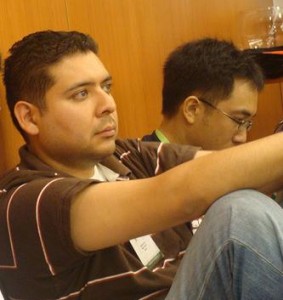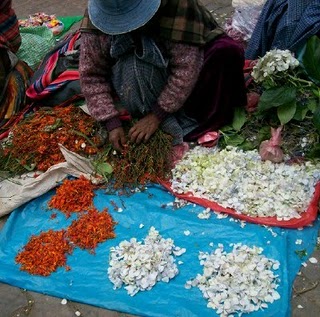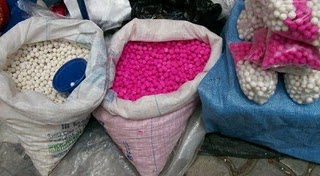(Marihina fa tamin'ny 3 Martsa 2010 no nanoratana ny lahatsoratra teny Anglisy)
Vao niantsafa tamin'i Eduardo Avila avy ao amin'ny Voces Bolivianas ny Los Tiempos, gazetiboky iray avy ao Cochabamba, Bolivia. Indro ny ampahany tamin'izany :
The project began developing workshops in El Alto, where we there were three blogs in a city of over half a million inhabitants. Voces Bolivianas (Bolivian Voices) then performed the same work in Plan 3000 in Santa Cruz, Oruro and Tiquipaya (Cochabamba).
Avila admits that the work was not easy, because few people have Internet access at home. For this reason most of the classes were given at Internet cafes.
From these digital literacy workshops, a new project called Jaqi-Aru was created, which is a virtual community promoting the use of Aymara on the Internet. There are 12 people under the leadership of linguist Ruben Hilari Quispe, who voluntarily translate texts from other languages into Spanish and Aymara.
Nanomboka nikarakara atrikasa tao El Alto ny tetikasa, izay ahitantsika bilaogy telo ao amin'ny tanàndehibe misy mponina dimy hetsy mahery. Ny Voces Bolivianas (Feon'ny Boliviana) dia nanao asa toy izany ihany koa tao amin'ny Plan 3000 tany Santa Cruz, Oruro sy Tiquipaya (Cochabamba).
Nanaiky i Avila fa tsy mora ny asa, satria vitsy ny olona manana fahafahana miditra amin'ny aterineto any an-trano. Noho izany, natao tany amin'ny cybercafe ny ankamaroan'ireo fampianarana .
Avy amin'ireo atrikasa fampianarana nomerika ireo no nananganana ny tetikasa vaovao antsoina hoeJaqi-Aru , vondrom-piarahamonina virtoaly mampiroborobo ny fampiasana ny fiteny Aymara ao amin'ny aterineto. Olona miisa 12 no eo ambany fitarihan'i Ruben Hilari Quispe, mpandalina momba ilay fiteny, izay nilatsaka an-tsitrapo handika an-tsoratra ny teny avy amin'ny fiteny hafa ho amin'ny teny Espaniôla sy Aymara.
Niresaka momba an'i Hilari sy Quispe ihany koa i Los Tiempos:
“In Bolivia there are 2.5 million speakers of Aymara and in South America there are an estimated 5 million, but there is very little material in our language. That's why the 12 people on the team are dedicated to selecting one or two articles each month and put them on the website www.jaqi-aru.org,” said Hilari. “Through the Internet we also raise awareness of the knowledge, science and culture that developed the Aymara language and that only scholars know,” says Edwin Quispe Quispe, who belongs to the Jaqi-Aru team.
” Misy olona miisa 2,5 tapitrisa mpampiasa ny fiteny Aymara ao Bolivia ary 5 tapitrisa eo ho eo any Amerika Atsimo, saingy kely ny fitaovana ao amin'ny fiteninay. Izany no mahatonga ireo olona miisa 12 ao amin'ny ekipa hirotsaka hisafidy lahatsoratra iray na roa isam-bolana ary hametraka azy ireo ao amin'ny tranonkala www.jaqi-aru.org, “hoy i Hilari. “Amin'ny alàlan'ny aterineto ihany koa no ahafahanay manao fanentanana momba ny fahalalana, ny siansa ary ny kolontsaina izay mampivoatra ny fiteny Aymara ary ireo manam-pahaizana ihany no mahafantatra izany “, hoy i Edwin Quispe Quispe, anisan'ny ekipan'i Jaqi-Aru.
Nanoratra momba ny fankalazana ny Martes De Ch'alla i Cristina Quisbert ao amin'ny Bolivia Indigena:
For this long carnival in the streets of El Alto and other cities, you can find the supplies needed to perform this ritual of being in relationship with mother earth. Nearby, one can find flowers of different colors, a bunch for 1 Boliviano (national currency) with a yapa (extra) included. Similarly, confetti in white, yellow, blue, pink and other colors, large and small, a pound of grades for 4 Bolivians or in bags of two, four or five Bolivianos. Also, alcohol or artisanal wine to be used to pour in the four corners of a property or house. Others prefer to buy streamers, balloons, flags or other decorations.
Ho an'ity karnavaly lava eny an-dalamben'i El Alto sy ao an-tanàndehibe hafa ity no ahitanao ny fitaovana ilainao amin'ny fanatontosana ity fombafomba amin'ny fifandraisana amin'ny reny tany ity. Manodidina eo no ahitana ny voninkazo amin'ny loko isan-karazany ary 1 Boliviano (vola nasionaly) miaraka amin'ny yapa (fanampiny) ny fehezany iray. Toy izany ihany koa, ny confetti (poti-taratsay) amin'ny lokony fotsy, mavo, manga, mavokely ary loko hafa, lehibe sy madinika, 4 Bolivianos ny antsasa-kilao na ao anaty harona ho an'ny roa, efatra na dimy Bolivianos. Ankoatra izany, ny zava-pisotro misy alikaola na ny divay dia nampiasaina hotondrahana isaky ny zoro efatra ao amin'ny trano iray na toerana iray. Aleon'ny olona sasany anefa mividy sora-baventy, na balaonina, na saina na fanaingoana hafa.
Nizara ny lahatsarin'ny hira iray efa adino izay nohiraina nandritra ny fampisehoana tamin'ny fankalazana ny karnavaly izy .
http://blip.tv/play/gcZVgcaaegI
Namoaka andiana lahatsoratra sy lahatsary momba ny karnavaly i Alberto Medrano ao amin'ny El Alto Noticias:
* Shanyra Zabala, El Alto Mpanjakavavin'ny Karnavaly 2010
* Karnavaly tao Bolivia: Corocoro “Fandrotsirotsian'ny C'UT”
* Sarin'ny karnavaly ao an-tanàndehibe Andeana El Alto,
Hugo Miranda ihany koa dia nanoratra momba ny karnavaly tao Oruro.
Nampatsiahy i Mario R. Duran ao amin'ny bilaogy Palabras Libres fa natao ny 13 Martsa 2010 ny BarCamp tany El Alto. Ny toerana dia ao amin'ny Universidad Publica de El Alto.


![jaqi aru [640x480]](https://rising.globalvoicesonline.org/files/2010/02/jaqi-aru-640x480.jpg)








